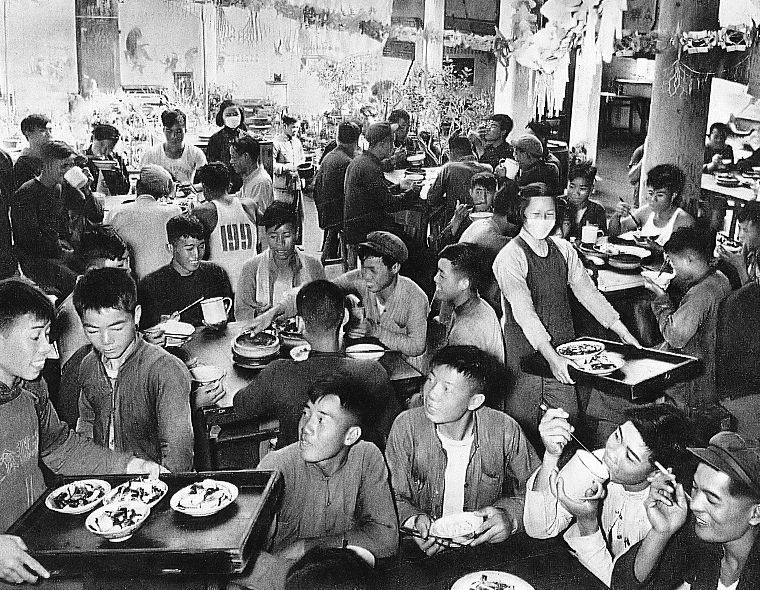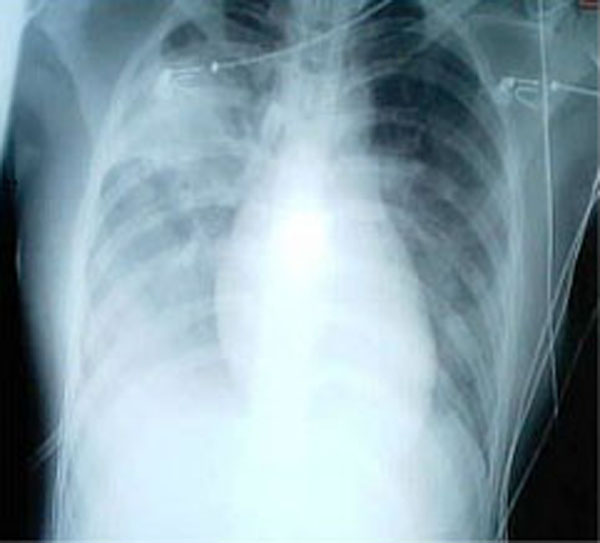|
Xiaotangshan, Beijing
Xiaotangshan Town () is a small town in the Changping District of Beijing, China. It lies immediately outside the Beijing 6th Ringroad, to the north of the city. According to the 2020 census, Xiaotangshan was home to 80,273 inhabitants. With a total area of 70.1 square kilometers, Xiaotangshan has rich geothermal resources, so much so that the name Xiaotangshan () originated from its abundance of geothermal springs. Xiaotangshan Hospital appeared in the news in May 2003 when the government hastily built a 1000-bed field hospital there to deal with an outbreak of SARS.China rushes to build new hospital for virus care: The facility in the central city of Wuhan is expected to ... [...More Info...] [...Related Items...] OR: [Wikipedia] [Google] [Baidu] |
Towns In China
When referring to political divisions of China, town is the standard English translation of the Chinese (traditional: ; ). The Constitution of the People's Republic of China classifies towns as third-level administrative units, along with for example townships (). A township is typically smaller in population and more remote than a town. Similarly to a higher-level administrative units, the borders of a town would typically include an urban core (a small town with the population on the order of 10,000 people), as well as rural area with some villages (, or ). Map representation A typical provincial map would merely show a town as a circle centered at its urban area and labeled with its name, while a more detailed one (e.g., a map of a single county-level division) would also show the borders dividing the county or county-level city into towns () and/or township () and subdistrict (街道) units. The town in which the county level government, and usually the division's main ... [...More Info...] [...Related Items...] OR: [Wikipedia] [Google] [Baidu] |
People's Commune
The people's commune () was the highest of three administrative levels in rural areas of the People's Republic of China during the period from 1958 to 1983, until they were replaced by townships. Communes, the largest collective units, were divided in turn into production brigades and production teams. The communes had governmental, political, and economic functions during the Cultural Revolution. The people's commune was commonly known for collectivizing living and working practices, especially during the Great Leap Forward. The scale of the commune and its ability to extract income from the rural population enabled commune administrations to invest in large-scale mechanization, infrastructure, and industrial projects. The communes did not, however, meet many of their long-term goals, such as facilitating the construction of socialism in the rural areas, liberating women from housework, and creating sustainable agriculture practices in the countryside. They ranged in number fr ... [...More Info...] [...Related Items...] OR: [Wikipedia] [Google] [Baidu] |
Shanghai Prison
The Tilanqiao Prison (), formerly known as the Ward Road Gaol or Shanghai Municipal Gaol, is a former prison in Hongkou District of Shanghai, China. Originally built in the foreign-controlled Shanghai International Settlement, following the Chinese Revolution it run by the Chinese Ministry of Public Security. Throughout the first forty or so years of its life it was the largest prison in the world and earned a reputation as the "Alcatraz of the Orient". Ward Road Gaol period (1903–1941) Tilanqiao Prison was built to hold those convicted of crimes in Shanghai's International Settlement. Prior to its construction foreign convicts were held in ad hoc prisons within their consulates (or, if British, the Amoy Road Gaol) until they could be returned to their home country, and Chinese citizens were handed over to the native Chinese authorities. In 1901, however, with the growing size of the International Settlement and, in the aftermath of the Boxer Rebellion, a fear the Qing governm ... [...More Info...] [...Related Items...] OR: [Wikipedia] [Google] [Baidu] |
Qincheng Prison
The Ministry of Public Security Qincheng Prison () is a maximum-security prison located in Qincheng Village, Xingshou, Changping District, Beijing in the People's Republic of China. The prison was built in 1958 with aid from the Soviet Union and is the only prison belonging to China's Ministry of Public Security. The Ministry of Justice operates other non-military prisons. Political prisoners have been incarcerated in Qincheng, among them participants in the Chinese democracy movement and Tiananmen Square protests of 1989. Famous former inmates include Li Rui, Jiang Qing, Yuan Geng, Bao Tong, Dai Qing, as well as Tibetan figures such as the 10th Panchen Lama Choekyi Gyaltsen and Phuntsok Wangyal. Other inmates included many communist cadres who struggled during the Cultural Revolution, such as Bo Yibo, Peng Zhen, Liu Xiaobo, Israel Epstein, Sidney Rittenberg and David Crook. More recently, high-ranking officials accused of corruption such as Chen Xitong, C ... [...More Info...] [...Related Items...] OR: [Wikipedia] [Google] [Baidu] |
COVID-19 Pandemic
The COVID-19 pandemic, also known as the coronavirus pandemic, is an ongoing global pandemic of coronavirus disease 2019 (COVID-19) caused by severe acute respiratory syndrome coronavirus 2 (SARS-CoV-2). The novel virus was first identified in an outbreak in the Chinese city of Wuhan in December 2019. Attempts to contain it there failed, allowing the virus to spread to other areas of Asia and later COVID-19 pandemic by country and territory, worldwide. The World Health Organization (WHO) declared the outbreak a public health emergency of international concern on 30 January 2020, and a pandemic on 11 March 2020. As of , the pandemic had caused COVID-19 pandemic cases, more than cases and COVID-19 pandemic deaths, confirmed deaths, making it one of the deadliest pandemics in history, deadliest in history. COVID-19 symptoms range from Asymptomatic, undetectable to deadly, but most commonly include fever, Nocturnal cough, dry cough, and fatigue. Severe illness is more likely ... [...More Info...] [...Related Items...] OR: [Wikipedia] [Google] [Baidu] |
SARS
Severe acute respiratory syndrome (SARS) is a viral respiratory disease of zoonotic origin caused by the severe acute respiratory syndrome coronavirus (SARS-CoV or SARS-CoV-1), the first identified strain of the SARS coronavirus species, '' severe acute respiratory syndrome–related coronavirus'' (SARSr-CoV). The first known cases occurred in November 2002, and the syndrome caused the 2002–2004 SARS outbreak. In the 2010s, Chinese scientists traced the virus through the intermediary of Asian palm civets to cave-dwelling horseshoe bats in Xiyang Yi Ethnic Township, Yunnan.The locality was referred to be "a cave in Kunming" in earlier sources because the Xiyang Yi Ethnic Township is administratively part of Kunming, though 70 km apart. Xiyang was identified on * For an earlier interview of the researchers about the locality of the caves, see: SARS was a relatively rare disease; at the end of the epidemic in June 2003, the incidence was 8,469 cases with a case fatality r ... [...More Info...] [...Related Items...] OR: [Wikipedia] [Google] [Baidu] |
Qing Dynasty
The Qing dynasty ( ), officially the Great Qing,, was a Manchu-led imperial dynasty of China and the last orthodox dynasty in Chinese history. It emerged from the Later Jin dynasty founded by the Jianzhou Jurchens, a Tungusic-speaking ethnic group who unified other Jurchen tribes to form a new "Manchu" ethnic identity. The dynasty was officially proclaimed in 1636 in Manchuria (modern-day Northeast China and Outer Manchuria). It seized control of Beijing in 1644, then later expanded its rule over the whole of China proper and Taiwan, and finally expanded into Inner Asia. The dynasty lasted until 1912 when it was overthrown in the Xinhai Revolution. In orthodox Chinese historiography, the Qing dynasty was preceded by the Ming dynasty and succeeded by the Republic of China. The multiethnic Qing dynasty lasted for almost three centuries and assembled the territorial base for modern China. It was the largest imperial dynasty in the history of China and in 1790 ... [...More Info...] [...Related Items...] OR: [Wikipedia] [Google] [Baidu] |
Qianlong Emperor
The Qianlong Emperor (25 September 17117 February 1799), also known by his temple name Emperor Gaozong of Qing, born Hongli, was the fifth Emperor of the Qing dynasty and the fourth Qing emperor to rule over China proper, reigning from 1735 to 1796. The fourth son of the Yongzheng Emperor, he reigned officially from 11 October 1735 to 8 February 1796. In 1796, he abdicated in favour of his son, the Jiaqing Emperor, out of filial piety towards his grandfather, the Kangxi Emperor, who ruled for 61 years, so that he not officially usurp him as the longest-reigning emperor. Despite his retirement, however, the Qianlong Emperor retained ultimate power as the Emperor Emeritus until his death in 1799, making him one of the longest-reigning monarchs in history, and dying at the age of 87, one of the longest-lived. As a capable and cultured ruler inheriting a thriving empire, during his long reign, the Qing Empire reached its most splendid and prosperous era, boasting a large po ... [...More Info...] [...Related Items...] OR: [Wikipedia] [Google] [Baidu] |
Southern And Northern Dynasties
The Northern and Southern dynasties () was a period of political division in the history of China that lasted from 420 to 589, following the tumultuous era of the Sixteen Kingdoms and the Eastern Jin dynasty. It is sometimes considered as the latter part of a longer period known as the Six Dynasties (220–589). Albeit an age of civil war and political chaos, it was also a time of flourishing arts and culture, advancement in technology, and the spread of Mahayana Buddhism and Daoism. The period saw large-scale migration of the Han people to the lands south of the Yangtze. The period came to an end with the unification of all of China proper by Emperor Wen of the Sui dynasty. During this period, the process of sinicization accelerated among the non-Han ethnicities in the north and among the indigenous peoples in the south. This process was also accompanied by the increasing popularity of Buddhism ( introduced into China in the 1st century) in both northern and southern Ch ... [...More Info...] [...Related Items...] OR: [Wikipedia] [Google] [Baidu] |
Administrative Division Codes Of The People's Republic Of China
The Administrative division codes of the People's Republic of China identify the administrative divisions of China at county level and above. They are published by the National Bureau of Statistics of China with the latest version issued on September 30, 2015. Coding scheme Reading from left to right, administrative division codes contain the following information: * The first and second digits identify the highest level administrative division, which may be a province, autonomous region, municipality or Special Administrative Region (SAR). * Digits three and four show summary data for the associated prefecture-level city, prefecture (地区 ''dìqū''), autonomous prefecture, Mongolian league, municipal city district or county. Codes 01 – 20 and 51 – 70 identify provincial level cities, codes 21 – 50 represent prefectures, autonomous prefectures and Mongolian leagues. *The fifth and sixth digits represent the county-level division – city district, county-lev ... [...More Info...] [...Related Items...] OR: [Wikipedia] [Google] [Baidu] |
Residential Community
A residential community is a community, usually a small town or city, that is composed mostly of residents, as opposed to commercial businesses and/or industrial facilities, all three of which are considered to be the three main types of occupants of the typical community. Residential communities are typically communities that help support more commercial or industrial communities with consumers and workers. That phenomenon is probably because some people prefer not to live in an urban or industrial area, but rather a suburban or rural setting. For that reason, they are also called dormitory towns, bedroom communities, or commuter towns. An example of a residential community would include a small town or city outside a larger city or a large town located near a smaller but more commercially- or industrially-centered town or city, for instance Taitou in Gaocun, Wuqing, Tianjin, China. China In the People's Republic of China, a community (), also called residentia ... [...More Info...] [...Related Items...] OR: [Wikipedia] [Google] [Baidu] |




